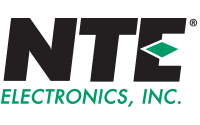
NTE Electronics, Inc.
NTE Electronics, Inc. is a prominent manufacturer and supplier of electronic components and accessories. With a history spanning over 40 years, the company has established itself as a trusted provider of high-quality products in the electronics industry. NTE offers a comprehensive range of electronic components, including semiconductors, resistors, capacitors, switches, relays, connectors, and more. These components are widely used in various applications, such as automotive, industrial, consumer electronics, and telecommunications. NTE focuses on delivering reliable and innovative solutions to meet the evolving needs of its customers. The company's commitment to quality is evident through its rigorous testing procedures and compliance with industry standards. NTE also offers value-added services like custom manufacturing, engineering support, and inventory management solutions to assist customers in optimizing their supply chain. With a global distribution network, NTE ensures efficient and timely delivery of its products worldwide. Overall, NTE Electronics, Inc. is recognized for its extensive product portfolio, exceptional quality, and customer-centric approach, making it a preferred choice for electronic components among professionals and hobbyists alike.
Slide Switches
Results:
4
Series
Operating Temperature
Termination Style
Actuator Type
Current Rating (Amps)
Contact Finish
Circuit
Actuator Length
Mounting Type
Voltage Rating - DC
Switch Function
Contact Timing
Voltage Rating - AC
Contact Material
Features
Results remaining:4
Applied Filters:
NTE Electronics, Inc.
About Slide Switches
Slide switches are electromechanical devices designed to regulate the flow of current within a circuit path. These devices are actuated by sliding a mechanical switch to establish or interrupt electrical connections. When considering slide switches, several key characteristics come into play, including circuit configuration, contact timing, switch function, current rating, voltage rating (AC or DC), and actuator type.
The circuit configuration refers to the specific arrangement and connectivity of the electrical circuits within the switch, determining how the current flows when the switch is in different positions. Contact timing denotes the precise timing at which the electrical contacts are engaged or disengaged during the sliding motion of the switch.
Switch functions for slide switches encompass a variety of options, such as single-pole, double-throw (SPDT), double-pole, double-throw (DPDT), on-off, or momentary on-off configurations. These functions determine the specific ways in which the switch can control the current flow within a circuit.
Furthermore, slide switches are characterized by their current rating, which indicates the maximum current that the switch can handle safely, and their voltage rating, specifying the maximum voltage (AC or DC) that the switch can accommodate without malfunction.
The actuator type of slide switches encompasses various designs to meet different application needs, including baton, flush, illuminated, plunger for cap, push-pull, recessed, rocker knob, screwdriver slot, snap-on cap, and standard actuators. Each actuator type offers distinct advantages and may be selected based on factors such as space constraints, ease of use, or aesthetic considerations.
In summary, slide switches are crucial components for controlling current flow within electrical circuits. Their selection depends on characteristics such as circuit configuration, contact timing, switch function, current and voltage ratings, and actuator type, with each of these factors playing a significant role in meeting the specific requirements of the intended application.




